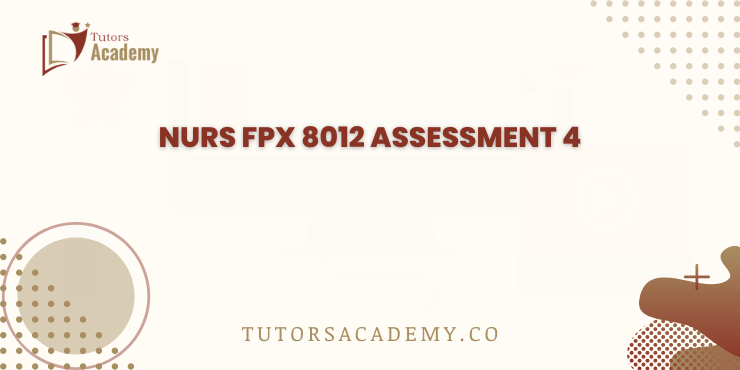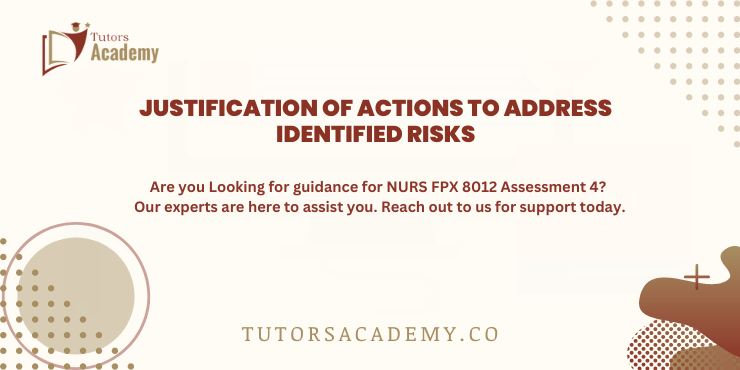
- NURS FPX 8012 Assessment 4 Risk Mitigation Plan
Risk Management Plan
| Risk identified by SAFER Guides | Possibility of Occurrence (Frequent, Sometimes, Never) | Potential for Harm (Severe, Mild, None) | Mitigation to Address Risks |
| Pressure ulcers cannot be prevented in a planned way as there are some issues with the implementation of EHR alerts. | Sometimes | Severe | Establish the standard procedures for setting up EHR alerts and then teach staff how to use them to prevent pressure ulcers (Rose et al., 2022). |
| The use of RTLS is not sufficient to prevent falls, which in turn, makes it more difficult to find the people who are at high risk. | Sometimes | Severe | Provide your team with more training on how to operate the RTLS, refine the ways of finding high-risk patients, and make the best of the resources (Guzzo et al., 2021). |
| PIS and drug balancing tools are not well connected, thus it is difficult to find medication-related risks. | Sometimes | Severe | Enhance the connection between PIS and software for medication reconciliation, check data frequently to see if it is correct, and teach the staff how to do drug risk assessments (Blum et al., 2022). |
| The use of tools for communication and planning only in part can lead to the delay or break-up of care. | Frequent | Mild | See to it that the private chat platforms and telehealth solutions are fully implemented. Train the staff on how to operate the tools correctly and establish guidelines for the care teams to interact with each other in a timely manner.. |
Ethical or Legal Issues Related to Identified Risks
In case healthcare systems don’t address the known hazards, it can cause a lot of moral and legal issues which will then affect patients, doctors, and institutions in a significant way. To begin with, the non-existence of a uniform way to arrest pressure ulcers due to the problems of having electronic health record (EHR) alerts in place poses serious ethical issues. Pressure sores can be very painful and can be mostly prevented by taking the right measures. The patients rely on healthcare institutions to take good care of them. If they don’t, it can be the reason for the break of their trust, the patients will not be happy, and even the legal consequences can be like malpractice suits. Mazur and Sharma (2024) also mention that the practitioners may have moral anxiety when they know that the harm that could have been avoided has happened while they were taking care of someone.
NURS FPX 8012 Assessment 4 Risk Mitigation
Just like that, patients are seriously in danger when RTLS is not properly used to prevent falls. Falls can be the main cause of serious injuries, reduced quality of life, or even death, especially in people who are already weak, like the old. The non-utilization of the existing technology for the detection and prevention of fall risks correctly puts the patient’s health at risk and the healthcare institutions at risk of being sued for negligence (Saw & Ng, 2022). Besides, if the patient information systems (PIS) and the drug reconciliation tools are not in sync, the doctors may miss the opportunities to discover the risks concerning the medications which can be very bad for the patient’s health. Medication mistakes are the main reason for healthcare system complications that could have been prevented. They can result in a bad drug reaction, a problem, or even death. The patients who are injured due to poor drug management could sue the institutions that do not fix these integration gaps. This could damage the universities’ reputation and end up in court.
Besides, some of the communication and coordination tools that are used only partially, which leads to the care being delayed or broken up, raise the ethical issues of the patient liberty and fairness. Patients deserve that care that is fast and well-integrated. If this is not given, it can be detrimental to their health and they won’t be happy. Practitioners may also have moral issues when they can’t provide the best care because of the problems in the system, which can influence their professional ethics and confidence (Giannetta et al., 2021). To sum up, the failure to acknowledge the known risks in healthcare systems results in ethical issues and makes the organizations face legal problems, bad press, and low patient care. To comply with the ethical guidelines, ensure that the patients are safe, and minimize the legal risks, the risks associated with these problems should be solved through the adoption of strict rules, the provision of comprehensive training, and the intelligent use of the available technology.

Justification of Actions to Address Identified Risks
The measures that are being recommended to cope with known risks are correct because they could minimize the damage, enhance the safety of the patients, and keep healthcare situations ethical. Pressure ulcers are not so dangerous if standard methods of setting up EHR alerts and staff training on how to prevent them are used. It is a sign that you are concerned about the health of your patients and that you are responsible as a worker. Through the functioning of alerts and prompt fast actions, the institutions can enhance patient care and eliminate unnecessary suffering.
In the same way, the gaps in fall prevention can be filled by providing the staff with more training on how to use real-time location systems (RTLS) and by improving the methods of finding high-risk patients. This safe technique reduces the risk of falls that may lead to serious injuries. It is a kind of reminder of the moral duty to put patient safety first. The proper distribution of resources is a way of showing the commitment to the improvement of healthcare services and the reduction of risks, thus, creating a sense of responsibility and hard work among the healthcare professionals (Guzzo et al., 2021).
Strengthening the link between the patient information systems (PIS) and the software for medication balancing, conducting regular checks, and training the staff on how to assess the medication risks are all ethical practices that are in line with the ideals of nonmaleficence and beneficence. The purpose of these steps is to support patient-centered care and at the same time to reduce the possibility of serious harm from drug errors. Institutions can enhance care management, better treatment outcomes, and maintain the patients’ and practitioners’ trust in the healthcare system by facilitating communication between them and the sharing of information (Rizvi et al., 2021).
Change Management Strategies
To apply the suggested alterations in healthcare, it is necessary to use change management techniques such as involving the stakeholders, creating communication plans, and training programs. The involvement of the partners, for example, doctors, managers, and IT staff, guarantees that all the people are on the same page and that all of them work as a team. The communication plans that are well defined and clear and explain the reasons for the changes, the time when they will happen, and who is responsible for what help to manage the expectations and thus reduce the resistance to change. Besides, the comprehensive training programs help the staff acquire the necessary skills and knowledge to use the new technologies and processes correctly (Khurshid et al., 2020).
These strategies are effective in the selected healthcare setting because they are designed for the complexity of the healthcare system where there are many people involved and they are probably not ready to change. Partners should be involved, and communication should be clear in healthcare situations where patient safety and quality of care are very important (Akindote et al., 2024) to ensure that the planned actions are implemented easily and effectively. Healthcare work is so specialized that the employees need constant training and help to learn how to use new tools and methods. This is the reason why training programs are so essential in the management of change.
Besides, these strategies also foster the attitude of continuous development and accountability in healthcare. Healthcare organizations such as Johns Hopkins Hospital can make their employees feel like they own and are accountable for their work by engaging the stakeholders, speaking openly, and giving the staff the appropriate training (Cui, 2021). Thus, the proposed actions are more likely to be well executed and this in turn leads to the development of the mindset of patient safety, quality improvement, and professional growth in the healthcare company. Read more about our sample NURS FPX 8012 Assessment 3 for complete information about this class.
References
Akindote, O. J., Adegbite, A. O., Omotosho, A., Anyanwu, A., & Maduka, C. P. (2024). Evaluating the effectiveness of it project management in healthcare digitalization: A review. International Medical Science Research Journal, 4(1), 37–50.
https://doi.org/10.51594/imsrj.v4i1.698
Blum, R., Fredette, E., Hyde, L., Young, K., Zhuang, Y. L., Banas, C. A., & Blakeslee, W. (2022). Pharmacy driven medication reconciliation productivity and error reduction: Results from a retrospective cohort study. Research Square (Research Square).
https://doi.org/10.21203/rs.3.rs-2019246/v1
Cui, Y. (2021). The role of emotional intelligence in workplace transparency and open communication. Aggression and Violent Behavior, 101602.
https://doi.org/10.1016/j.avb.2021.101602
Giannetta, N., Villa, G., Pennestrì, F., Sala, R., Mordacci, R., & Manara, D. F. (2021). Ethical problems and moral distress in primary care: A scoping review. International Journal of Environmental Research and Public Health, 18(14), 7565.
https://doi.org/10.3390/ijerph18147565
Guzzo, A., Rullo, A., & Vocaturo, E. (2021). Process mining applications in the healthcare domain: A comprehensive review. WIREs Data Mining and Knowledge Discovery.
https://doi.org/10.1002/widm.1442
Kho, J., Gillespie, N., & Martin-Khan, M. (2020). A systematic scoping review of change management practices used for telemedicine service implementations. BMC Health Services Research, 20(1).
https://doi.org/10.1186/s12913-020-05657-w
Khurshid, Z., De Brún, A., Moore, G., & McAuliffe, E. (2020). Virtual adaptation of traditional healthcare quality improvement training in response to COVID-19: A rapid narrative review. Human Resources for Health, 18(1).
https://doi.org/10.1186/s12960-020-00527-2
Mazur, S. L., & Sharma, J. B. (2024). Medical oversight and public trust of medicine: Breaches of trust. Psychiatry Update, 35–55.
https://doi.org/10.1007/978-3-031-48557-2_3
Rizvi, R., VanHouten, C., Bright, T. J., McKillop, M. M., Alevy, S., Brotman, D., Sands-Lincoln, M., Snowdon, J., Robinson, B. J., Staats, C., Jackson, G. P., & Kassler, W. J. (2021). The perceived impact and usability of a care management and coordination system in delivering services to vulnerable populations: Mixed methods study. Journal of Medical Internet Research, 23(3), e24122.
Rose, A., Cooley, A., Yap, T. L., Alderden, J., Sabol, V. K., Lin, J.-R. (Angela), Brooks, K., & Kennerly, S. M. (2022). Increasing nursing documentation efficiency with wearable sensors for pressure injury prevention. Critical Care Nurse, 42(2), 14–22.
https://doi.org/10.4037/ccn2022116
Saw, S. N., & Ng, K. H. (2022). Current challenges of implementing artificial intelligence in medical imaging. Physica Medica, 100, 12–17.
https://doi.org/10.1016/j.ejmp.2022.06.003
Shneiderman, B. (2020). Bridging the gap between ethics and practice. ACM Transactions on Interactive Intelligent Systems, 10(4), 1–31.
https://dl.acm.org/doi/abs/10.1145/3419764
Ting, J. J., & Garnett, A. (2021). E-health decision support technologies in the prevention and management of pressure ulcers. CIN: Computers, Informatics, Nursing, Publish Ahead of Print.
https://doi.org/10.1097/cin.0000000000000780
Need help with your NURS FPX 8012 Assessment 4? Our experts are ready to assist you. Get in touch with us for support today.
